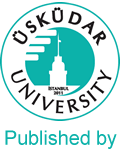Years
2021
2020
2015
Categories
Authors
ARTICLES
Original Article
Turkish Title : Evaluating of Solute Carrier Family 6 Member 4 Gene (SLC6A4) Promoter Polymorphisms with Escitalopram Plasma Levels for Precision Medicine in Major Depressive Disorder
Canbolat Fadime,Erinc Dilek Meltem Tasdemir,Sercan Canan,Evrensel Alper,Ulucan Korkut,Aydın Ahmet,Tarhan Kasif Nevzat
JNBS, 2021, 8(1), p:62-69
Aim and Objective: Escitalopram (SCT) shows an antidepressant effect due to its mechanism of increasing the serotonin level by inhibiting the serotonin transporter protein (5HTT). 5HTT is encoded by solute carrier family 6 member 4 gene (SLC6A4) in the brain. Recognition of SCT plasma level of patients and pharmacodynamics of individuals during SCT treatment will increase the expected response to the treatment and reduce the adverse effects. This study aims to determine the effect of SLC6A4 promoter long/ short polymorphism and the SCT plasma level of patients on the response to treatment during the SCT drug therapy. Materials and Methods: Blood and plasma samples of 30 major depressive patients using 20 mg SCT for 8 weeks between the ages of 18 and 65 were analyzed to determine SCT plasma level and SLC6A4 promoter polymorphism. The treatment response level was determined by using the Hamilton Depression Rating Scale at patient files. Results: SCT plasma level of the nine patients with LL polymorphism was found to be in the range of 13.40–63.36 ng/mL. For 13 patients with LS polymorphism, SCT plasma level was found to be in the range of 2.93–57.48 ng/mL. For eight patients with SS polymorphism, the SCT plasma level was found to be in the range of 0.95–49.32 ng/mL. Conclusion: When the association between SCT plasma level and response to the drug treatment was examined, we had significant results to show that SCT level affected the response to treatment, especially in the LS group, as well as the SLC6A4 promoter variation. This study may lead to a more profound understanding of rational drug therapy as well as to a careful application of pharmacogenetics in psychiatry.
Aim and Objective: Escitalopram (SCT) shows an antidepressant effect due to its mechanism of increasing the serotonin level by inhibiting the serotonin transporter protein (5HTT). 5HTT is encoded by solute carrier family 6 member 4 gene (SLC6A4) in the brain. Recognition of SCT plasma level of patients and pharmacodynamics of individuals during SCT treatment will increase the expected response to the treatment and reduce the adverse effects. This study aims to determine the effect of SLC6A4 promoter long/ short polymorphism and the SCT plasma level of patients on the response to treatment during the SCT drug therapy. Materials and Methods: Blood and plasma samples of 30 major depressive patients using 20 mg SCT for 8 weeks between the ages of 18 and 65 were analyzed to determine SCT plasma level and SLC6A4 promoter polymorphism. The treatment response level was determined by using the Hamilton Depression Rating Scale at patient files. Results: SCT plasma level of the nine patients with LL polymorphism was found to be in the range of 13.40–63.36 ng/mL. For 13 patients with LS polymorphism, SCT plasma level was found to be in the range of 2.93–57.48 ng/mL. For eight patients with SS polymorphism, the SCT plasma level was found to be in the range of 0.95–49.32 ng/mL. Conclusion: When the association between SCT plasma level and response to the drug treatment was examined, we had significant results to show that SCT level affected the response to treatment, especially in the LS group, as well as the SLC6A4 promoter variation. This study may lead to a more profound understanding of rational drug therapy as well as to a careful application of pharmacogenetics in psychiatry.
Original Article
Attitudes of turkish psychiatrists regarding transcranial magnetic stimulation
Turkish Title : Türkiyeli psikiyatrların transkraniyal manyetik uyarım tedavisine yönelik tutumları
Ünsalver Barış Önen,Evrensel Alper,Sayar Gökben Hızlı,Karamustafalıoğlu Oğuz,Tarhan Nevzat
JNBS, 2020, 7(1), p:37-41
Transcranial Magnetic Stimulation (TMS) is not widely used in the world. Besides financial constraints like limited allocation of funds for psychiatric clinics, psychiatrists’ knowledge and attitudes regarding TMS may limit its widespread use. Therefore, this survey study aimed to examine the knowledge and attitudes of Turkish psychiatrists towards TMS. An online survey that was developed by the researchers containing 26 questions about physicians’ demographic data and their knowledge and attitudes towards TMS was sent to a closed e-mail group of psychiatrists and assistant psychiatrists. The study sample comprised 46 women and 61 men. Having knowledge about TMS statistically significantly affected participants’ approaches to accept TMS as a promising treatment, approve the spread of TMS as a treatment modality, desire to have more information about the mechanism of action of TMS (p=0.006; p=0.019 and p=0.013, respectively), whereas it didn’t statistically significantly affect their approaches to accept TMS as an effective treatment method, consider TMS as a misleading treatment for patients, use TMS only in the treatment of treatment-resistant depression patients (p=0.060, p=0.065, and p=0.136, respectively). Most of the psychiatrists who completed the survey in Turkey had a positive view of TMS and wanted to increase their knowledge. It may be appropriate to increase the number of presentations on TMS therapy at psychiatry meetings and encourage residents to make observations in clinics where TMS is administered, during psychiatric residency.
Transkraniyal Manyetik Uyarım (TMU) dünyada yaygın kullanılan tedavi yöntemlerinden biri değildir. Psikiyatrik tedaviler için ayrılan bütçenin kısıtlılığı yanısıra psikiyatristlerin TMU’ya dair bilgileri ve tutumları da TMU’nun yaygın kullanımını olumsuz etkileyebilir. Bu anket çalışmasında Türkiye’de çalışan psikiyatri asistanları ve uzmanlarının TMU’ya yönelik tutum ve bilgilerinin ölçülmesi amaçlanmıştır. Araştırmacıların geliştirdiği ve hekimlerin sosyodemografik bilgileri, TMU’ya yönelik bilgileri ve tutumlarını ölçen 26 soruluk anket psikiyatri asistan ve uzmanlarının üye olduğu kapalı bir e-posta grubuna yönlendirilmiştir. Örneklem 46 kadın ve 61 erkekten oluşuyordu. TMU’ya dair bilgi sahibi olmak, katılımcıların TMU’yu umut vaat eden bir tedavi yöntemi olarak görmesini, TMU’nun bir tedavi olarak yaygınlaşmasını onaylamayı ve TMU’nun etki mekanizması hakkında daha fazla bilgi sahibi olma isteğini istatistiksel anlamlı olarak etkiliyordu (p=0.006; p=0.019 and p=0.013);ancak, TMU’yu etkili bir tedavi yöntemi olarak kabul etmeyi, TMU’yu hastaları yanıltmaya yönelik bir tedavi olarak görmeyi ve TMU’yu sadece tedaviye dirençli olgularda kullanmayı anlamlı olarak (p=0.060, p=0.065, and p=0.136). Türkiye’den katılımcı hekimlerin çoğunun TMU’ya dair olumlu fikirleri olduğu ve TMU’ya dair daha fazla bilgi sahibi olmak istedikleri gözlemlendi. Bilimsel toplantılarda TMU’ya dair sunumların sayısını arttırmak ve asistanlık eğitimleri sırasında TMU uygulanan kliniklerde rotasyon imkanı sağlamak faydalı olabilir.
Case Report
Early onset progressive nonfluent aphasia
Turkish Title : Erken başlangıçlı progresif tutuk afazi
Evrensel Alper,Cömert Gökçe,Şalçini Celal
JNBS, 2015, 2(3), p:117-119
Progressive nonfluent aphasia is a slowly progressive degenerative disease characterized by atrophy in left hemisphere particularly frontotemporal. It is one of three subtypes of frontotemporal lobar degeneration (frontotemporal dementia). Unlike Alzheimer’s disease it begins between 45-65 years of age and occurs equally in both sexes usually. The reported youngest case was 21 years old. Atrophy is seen in the left hemisphere more in temporal lobe on magnetic resonance imaging. Approximately half of the cases have family history. In early it might confuse with depression and therefore diagnosis may be delayed. Brain magnetic resonance imaging is important for verification of diagnosis. In this paper, a case who early onset progressive nonfluent aphasia was mentioned.
Progresif tutuk afazi, sinsi başlangıçlı, yavaş ilerleyen, sol hemisferde (özellikle frontotemporal) atrofi ile seyreden dejeneratif bir hastalıktır. Frontotemporal lobar dejenerasyonun (frontotemporal demans) üç alt tipinden biridir. Alzheimer hastalığının aksine genelde 45-65 yaş arasında başlar ve her iki cinsiyette eşit oranda görülür. Bildirilmiş en genç olgu 21 yaşındadır. MRI’da sol hemisferde daha çok temporal lobda atrofi görülür. Olguların yaklaşık yarısında aile öyküsü vardır. Erken dönemlerde depresyon ile karıştırılabilir. Bu nedenle tanıda gecikilebilir. Beyin MRI tanıyı doğrulamada önemlidir. Bu makalede erken başlangıçlı bir progresif tutuk afazi olgusu sunulmuştur.
| ISSN (Print) | 2149-1909 |
| ISSN (Online) | 2148-4325 |
2020 Ağustos ayından itibaren yalnızca İngilizce yayın kabul edilmektedir.


